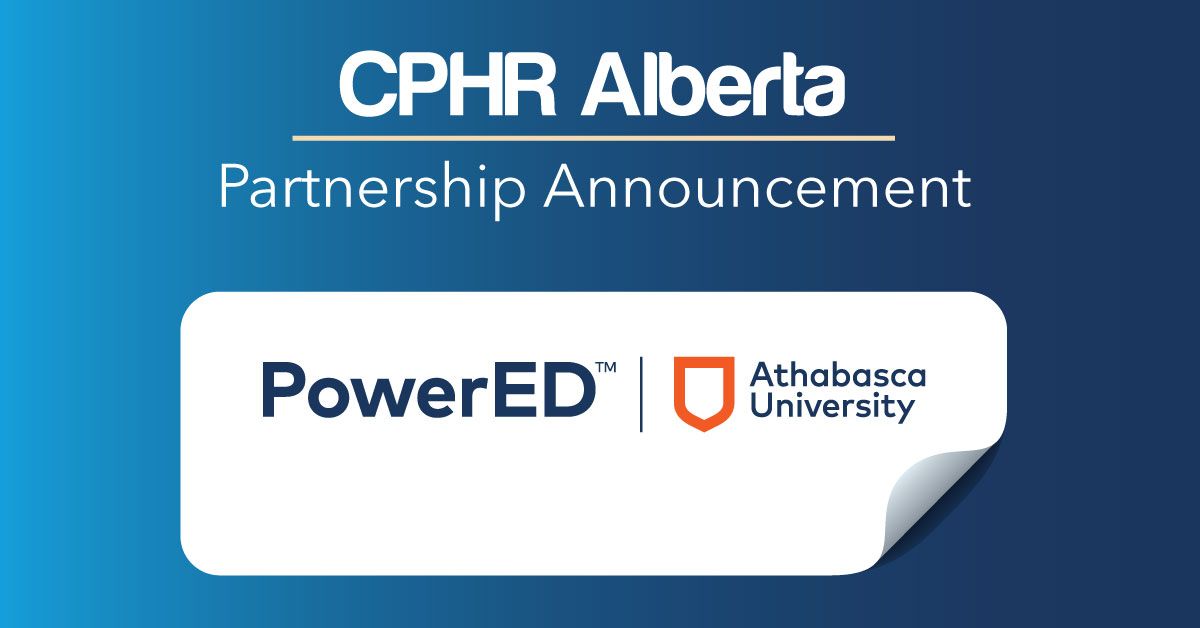
Broaden your learning with PowerED™ by Athabasca University – Partnership Renewal

CPHR Alberta is happy announce a partnership renewal with PowerED™ by Athabasca University to support the continued growth and learning of our members.
About PowerED™
PowerED™ is an award-winning entrepreneurial unit within Athabasca University, that builds on the university’s rich history of online learning, flexibility, and accessibility. At PowerED™, we embrace innovation. We provide online, on-demand learning for organizations and individual learners. We are focused on assisting organizations to develop and deploy their digital learning strategies, building skills and driving results. We provide tangible tools and training to inspire breakthroughs – for individuals, employees, and organizations – in a meaningful way with immediate impact.
Today’s professional learners care about making a difference but need the time and flexibility to do so. PowerED offerings prioritize learning objectives that can be implemented to craft fast, effective solutions to complex problems. Learn new skills and perspectives in a highly engaging and interactive learning environment with an elevated multi-media experience. Gain the power to create meaningful change in your organization and fulfill your CPD requirements simultaneously.
To learn more about PowerED™, click here.
Member Beneifts
Through PowerED™, CPHR Alberta members have access to a number of micro-credentials that have been selected and tailored to fit the unique needs of our HR community. Member can access several on-demand courses and certificates including Embracing Allyship & Inclusion, Coach Approach for Leadership Development, Essential Skills for Leaders and newly launched courses in Artificial Intelligence Ethics.
All courses have been pre-approved for CPD hours and are being offered at a new and higher discounted rate to CPHR Alberta members only! Explore the unique learning management system and view courses through the link in your member profile. Courses are entirely asynchronous, offering the maximum level of flexibility for your schedule. Take advantage of PowerED’s on-demand enrolment and start when the training works best for you.
The views and opinions expressed in this blog post belong solely to the original author(s) and do not necessarily represent the views and opinions of CPHR Alberta.





